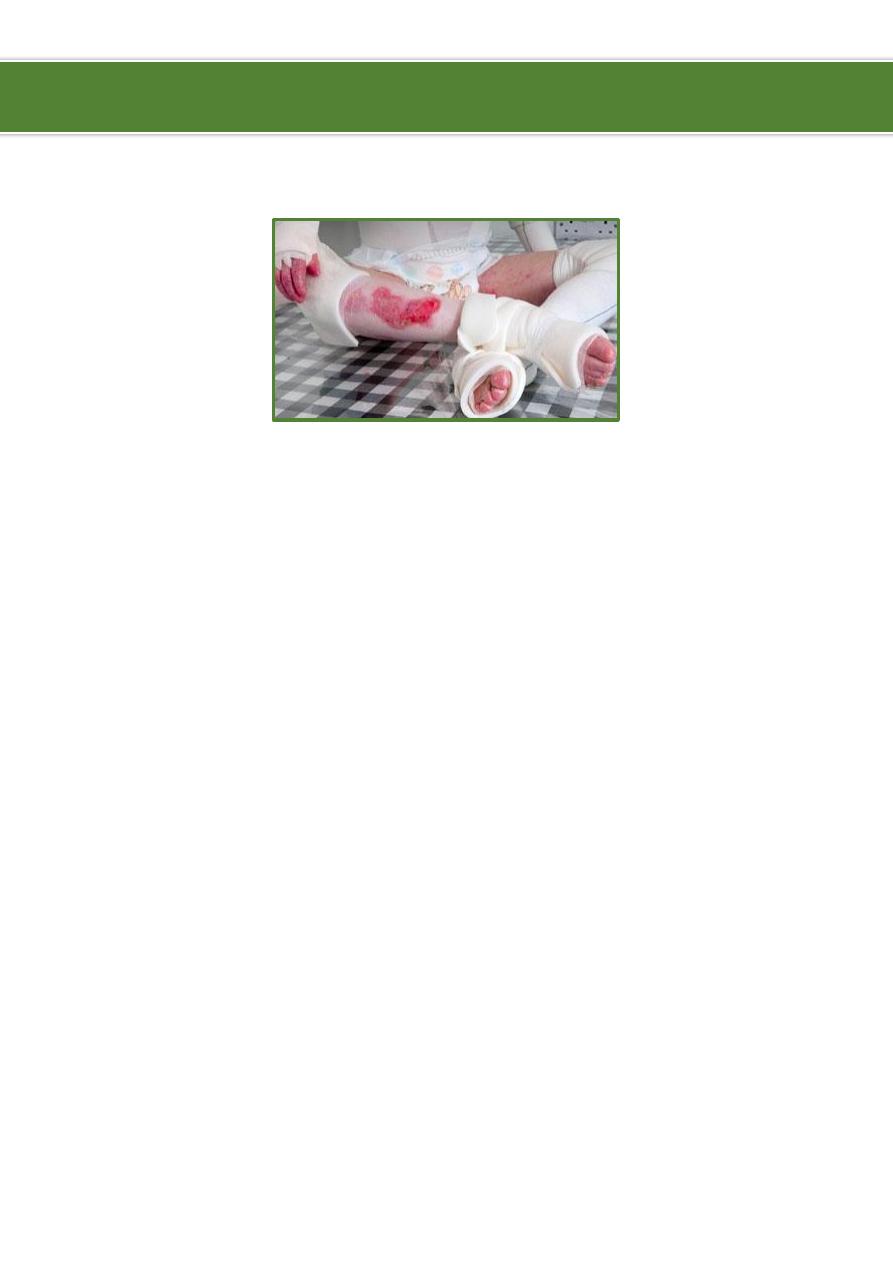
1
Epidermolysis bullosa
Watch this video: https://www.youtube.com/watch?v=iuYxGtuBSgk
Background:
Epidermolysis bullosa (EB) is a group of inherited (autosomal recessive) bullous
disorders characterized by blister formation in response to mechanical trauma.
Epidermolysis bullosa is a family of bullous disorders caused by an absence of
basement membrane components due to underlying gene mutations.
It is very rare condition (7 in every million live birth).
Prognosis handicap, infant die, childhood die, complications (infection, sepsis,
SSC, Pseudosyndactyly, Mucosal complications).
Categories:
EB simplex intraepidermal skin separation.
Junctional EB skin separation in lamina lucida or central
basement membrane
.
Dystrophic EB sublamina densa
basement membrane
separation.
Physical Examination:
Perform a complete physical examination with an emphasis on inspection of all skin, as
well as conjunctival, oral, and genital mucosae.
Evaluate the size, location, and character of blisters.
Attempt to assess the general level at which lesions split.
Superficial blisters manifest as crusted erosions.
Intraepidermal blisters are flaccid and may expand under pressure.
Intralamina lucida blisters are tense and heal with atrophy but no scarring.
Sublamina densa blisters heal with scarring and milia formation.
Assess for involvement of nails, hair, or teeth.
Ibnlatef
Notes
Pediatrics

2
Differential Diagnosis:
Bullous Systemic Lupus Erythematosus (BSLE).
Epidermolysis Bullosa Acquisita.
Initial Evaluation and Management of the Burn Patient.
Management:
Medication Epidermolysis bullosa is a genetic disease and no drugs are known to
correct the underlying molecular defects.
Skin involvement Wound healing, Infection, Tumors.
GI management phenytoin, oral steroid (prolonged use of steroids is
contraindicated) elixirs to reduce the symptoms of dysphagia, anticandidal medication
if there is candidiasis, surgery (esophageal dilation, removal of esophageal strictures by
colonic interposition, gastrostomy tube insertion).
Eye lesions antibiotic ointment, cycloplegic agents, avoid using tape to patch the
eye, moisture chambers and ocular lubricants.
Oral care good dental hygiene.
Surgical restoration of the hand.
Endotracheal tube placement perform this procedure with extra care in patients
with epidermolysis bullosa.
Genetic counseling.
Diet increased needs of caloric and protein intake, impediments to intake and
absorption.
Physical therapy reducing limb and hand contractions and in maintaining the range
of motion.
Prevention prevention of trauma to the skin reduces blistering, padding of limbs
helps reduce unnecessary trauma, a soft mechanical diet helps reduce oral and
esophageal erosions.
Long-Term Monitoring proper wound and nutritional care, physical therapy,
education of patient and family members is essential.
----------------------------------------------------------------------------------------------
www.facebook.com/ibnlatef
https://goo.gl/RpvNsl
